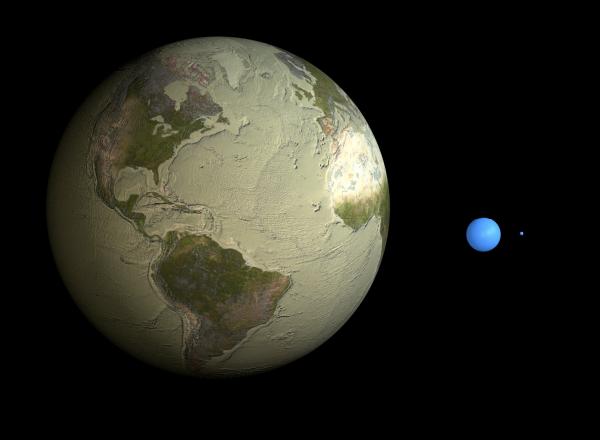
How Much Water Is on Earth?

If Earth was the size of a basketball, all of its water would fit into a ping pong ball.
How much water is that? It's roughly 326 million cubic miles (1.332 billion cubic kilometers), according to a recent study from the U.S. Geological Survey. Some 72 percent of Earth is covered in water, but 97 percent of that is salty ocean water and not suitable for drinking.
"There's not a lot of water on Earth at all," said David Gallo, an oceanographer at the Woods Hole Oceanographic Institution (WHOI) in Massachusetts.
Oceans create a water layer spanning 15,000 miles (24,000 kilometers) across the planet at an average depth of more than 2 miles (3.2 km). If you poured all of the world's water on the United States and could contain it, you'd create a lake 90 miles (145 km) deep.
This seems, and looks, like a lot of water, Gallo told Life's Little Mysteries, but looks can be deceiving.
If the Earth was an apple, Gallo said, the water layer would be thinner than the fruit's skin. The Earth's freshwater is even rarer.
"For humanity to thrive, or even exist, we need to sprinkle that teeny bit of fresh water in the right places, at the right times and in just the right amounts," Gallo said.
Sign up for the Live Science daily newsletter now
Get the world’s most fascinating discoveries delivered straight to your inbox.
Here's how Earth's freshwater is spread around the globe:
- 70 percent of freshwater is locked in ice caps
- Less than 1 percent of the world's freshwater is readily accessible
- 6 countries (Brazil, Russia, Canada, Indonesia, China and Colombia) have 50 percent of the world's freshwater reserves
- One-third of the world's population lives in "water-stressed" countries, defined as a country's ratio of water consumption to water availability. Countries labeled as moderate to high stress consume 20 percent more water than their available supply.
There is much more freshwater stored in the ground than there is in liquid form on the surface, according to the USGS.
This article was provided by Life's Little Mysteries, a sister site to OurAmazingPlanet.









